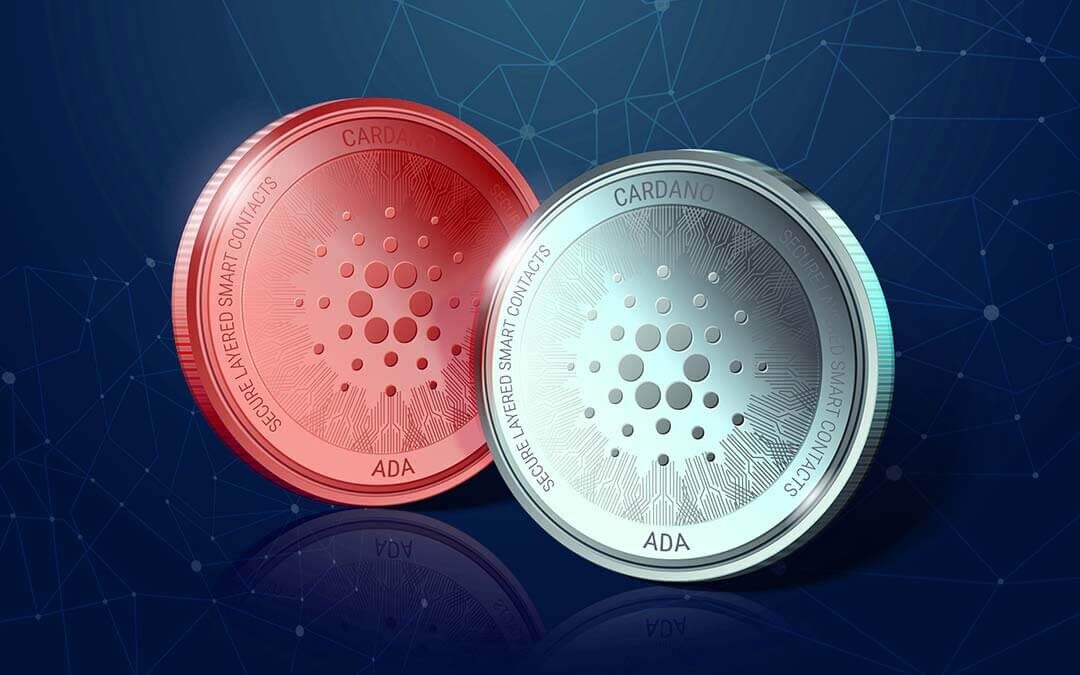Table of Contents
Cardano is a revolutionary blockchain platform created to provide a secure and scalable environment for decentralized applications (dApps) and smart contracts. Launched in 2017, Cardano has become a pioneering project in the blockchain space, emphasizing scientific rigor and a structured, peer-reviewed development process.
At the heart of the Cardano network lies its native cryptocurrency, ADA, which plays a vital role within the ecosystem. ADA serves as a medium of exchange, a staking asset, and a key to network governance. ADA holders participate in securing the network and earn rewards, showcasing Cardano’s unique approach to incentivizing engagement within its ecosystem.
The Name Behind the Blockchain: Why “Cardano”?
The name “Cardano” honors Gerolamo Cardano, a 16th-century Italian mathematician, physician, and polymath who contributed significantly to fields such as algebra and probability. Cardano’s pioneering work in probability theory laid the groundwork for financial systems and cryptographic principles that underpin blockchain technology. Cardano, as a blockchain, mirrors his spirit of innovation, drawing on scientific methods and formal research to build a secure, adaptable platform.
Who Was Gerolamo Cardano?
Gerolamo Cardano, born in 1501, was a Renaissance figure known for his intellectual contributions across mathematics, medicine, and philosophy. Among his notable works, he developed early solutions to cubic and quartic equations, sparking advancements in polynomial mathematics. His interest in probability theory later influenced statistical models used in finance and, conceptually, within blockchain systems for cryptography and data integrity.
The ADA Cryptocurrency: Tribute to Ada Lovelace
Cardano’s native cryptocurrency, ADA, takes its name from Ada Lovelace, a 19th-century mathematician often celebrated as the first computer programmer. Lovelace worked with Charles Babbage, contributing algorithms to his early mechanical computer. Her work anticipated computational programming, and her legacy mirrors Cardano’s pursuit of a technically rigorous, forward-thinking blockchain.
ADA holders leverage the token to power decentralized applications, facilitate smart contracts, and engage in staking. Like Lovelace, who envisioned computing’s transformative potential, Cardano aims to address blockchain’s evolving challenges, from scalability to interoperability.
The Three Pillars of Cardano’s Vision: Decentralization, Interoperability, and Scalability
At its core, Cardano is driven by three foundational pillars: decentralization, interoperability, and scalability. These pillars form the basis of Cardano’s technical and philosophical vision, guiding every stage of its development.
Decentralization: Empowering the Community
Decentralization is fundamental to Cardano’s mission, ensuring that network control is distributed among ADA holders rather than centralized entities. Cardano achieves this through its proof-of-stake system, which allows anyone to participate in validating transactions or delegating ADA to staking pools. By spreading power across a broad base, Cardano increases security and reduces the risks associated with centralized control, aligning with the blockchain ethos of transparency and user autonomy.
Interoperability: Building Bridges Across Blockchains
Cardano places significant emphasis on interoperability, aiming to create a blockchain ecosystem where various platforms can communicate and share data seamlessly. Through a focus on standards and protocols, Cardano envisions a future where users can transfer assets or data across different blockchains, from private networks to established platforms like Bitcoin and Ethereum. This cross-chain compatibility is integral for applications such as decentralized finance (DeFi), where assets and data flow freely, expanding blockchain’s utility across industries.
Scalability: Supporting Global Adoption
To facilitate broad adoption, Cardano prioritizes scalability, ensuring that the platform can support a high volume of transactions without sacrificing speed or security. Cardano’s layered architecture, which separates its settlement and computation layers, enhances efficiency by isolating transaction processes from complex computations required for dApps and smart contracts. Scalability is crucial for supporting an expanding network of users, businesses, and applications, positioning Cardano to handle large-scale, global use cases.
Cardano’s Development Phases: A Structured Roadmap
Cardano’s evolution is guided by a well-defined roadmap with five distinct phases: Byron, Shelley, Goguen, Basho, and Voltaire. Each phase focuses on advancing specific functionalities. Byron established the network and ADA’s foundational infrastructure. Shelley introduced decentralization, allowing ADA holders to stake and earn rewards. The Goguen phase enabled smart contracts and native token functionality, opening Cardano to DeFi and NFT applications. Basho enhances scalability and interoperability, while Voltaire emphasizes community governance, giving ADA holders voting rights on Cardano’s future.
Cardano’s Ecosystem: Key Organizations and Community Support
The Cardano ecosystem is bolstered by three main entities: IOHK, EMURGO, and the Cardano Foundation, each playing a pivotal role in its growth and development.
IOHK: Engineering Blockchain with Scientific Precision
Input Output Hong Kong (IOHK), founded by Charles Hoskinson, is the engineering and research arm behind Cardano. IOHK’s research-driven approach focuses on creating secure, scalable blockchain systems backed by formal methods. IOHK collaborates with academic institutions, advancing the technical foundation of Cardano and bringing scientific rigor to blockchain technology.
EMURGO: Driving Real-World Adoption
EMURGO, Cardano’s commercial arm, is responsible for fostering Cardano’s adoption across various industries. Through partnerships and application development, EMURGO focuses on practical use cases, including supply chain management and financial services, that demonstrate Cardano’s capabilities and promote widespread use.
The Cardano Foundation: Supporting Community and Governance
The Cardano Foundation is a non-profit organization dedicated to promoting the Cardano protocol, supporting regulatory engagement, and fostering community growth. By organizing events, educational programs, and outreach efforts, the Foundation strengthens Cardano’s global presence and enables community-driven innovation.
Real-World Applications: DeFi, NFTs, and More
Cardano’s robust, scalable infrastructure supports a wide array of applications, making it a versatile choice for industries from finance to digital art.
Decentralized Finance (DeFi) on Cardano
Cardano enables the development of DeFi applications, providing users with alternatives to traditional financial services, such as lending, borrowing, and trading. DeFi on Cardano leverages the platform’s secure and efficient transaction processing, offering a reliable foundation for financial innovation.
Non-Fungible Tokens (NFTs) and Digital Ownership
Cardano has established itself as a sustainable platform for non-fungible tokens (NFTs), allowing artists, creators, and collectors to tokenize digital art and other unique assets. By enabling low-cost, secure transactions, Cardano provides a viable alternative to more energy-intensive blockchain networks. This efficiency, combined with Cardano’s emphasis on transparency and user security, makes it particularly attractive for creators who want to protect their work’s originality and connect with a global audience.
Supply Chain Management and Transparency
Beyond financial applications, Cardano is making strides in industries like supply chain management, where transparency and traceability are essential. The platform’s immutable ledger ensures that every step of a product’s journey is recorded, allowing companies to verify origins, track logistics, and build trust with consumers. For sectors such as agriculture, retail, and manufacturing, Cardano’s transparency strengthens accountability and reduces instances of fraud, enhancing overall operational efficiency.
ADA Wallets: Storing and Managing Cardano’s Native Cryptocurrency
ADA holders have access to several secure wallets to manage and store their assets, each offering unique features tailored to different needs.
Daedalus Wallet
Daedalus is Cardano’s full-node desktop wallet, developed by IOHK. As a full-node wallet, it downloads the complete Cardano blockchain to ensure enhanced security and transparency for its users. Daedalus offers advanced functionality for staking ADA, allowing users to directly participate in network security by delegating their stake or running a stake pool.
Yoroi Wallet
Yoroi, developed by EMURGO, is a lightweight wallet that prioritizes ease of use and convenience. Available as a browser extension and mobile app, Yoroi provides a streamlined option for users who prefer quick, accessible management of their ADA without requiring a full-node download. Yoroi is well-suited for everyday transactions and staking on the go.
Hardware Wallet Options
For enhanced security, ADA can also be stored on hardware wallets such as Ledger Nano X, which protects users’ private keys offline. Hardware wallets are ideal for long-term storage, offering an added layer of protection against online threats, especially for high-value holdings.
Conclusion: Cardano’s Vision for a Decentralized Future
Cardano represents a significant advancement in blockchain technology, driven by its commitment to decentralization, interoperability, and scalability. With a scientific approach that includes peer-reviewed research and structured development phases, Cardano has set new standards in security, sustainability, and transparency.
Each element of the Cardano ecosystem—from its ADA cryptocurrency to its layered architecture—serves a purpose aligned with its vision of a decentralized, user-driven financial future. Cardano’s ongoing progress in real-world applications, including DeFi, NFTs, and supply chain management, demonstrates the platform’s versatility and potential impact across various industries.
As Cardano’s roadmap continues to unfold, with its community actively contributing to development and governance, the platform remains well-positioned to support the next generation of blockchain applications. Through its unique approach and foundational principles, Cardano is poised to bring lasting change to the digital landscape, pushing the boundaries of what blockchain can achieve for global adoption.
Support the project
Delegate with Pasta Pool
You may delegate even a small part of your Cardano, every contribution is precious for us.
Select [PASTA] from the staking pool list


